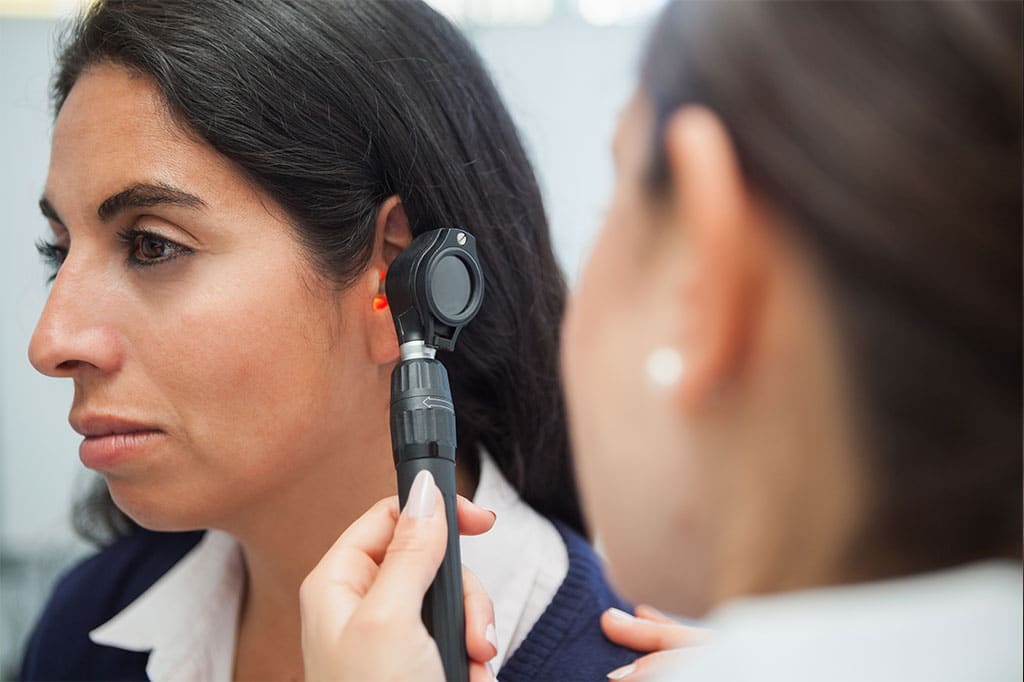Do you find yourself struggling to hear where sounds are coming from?
Maybe you frequently misjudge the direction of a car horn or can’t quite pinpoint the location of a voice. If so, you might be experiencing spatial hearing loss.
With the rise of urban living and the ever-present noise pollution, it’s no surprise that our ability to accurately perceive the direction and location of sounds is becoming more challenging.
This is why understanding spatial hearing loss and its implications is crucial.
In this guide, we’ll cover the signs, causes, and treatment options for spatial hearing loss. Read on for a comprehensive understanding of what to look out for and where to turn for expert guidance.
Spatial Hearing Loss Conditions
- Unilateral Spatial Hearing Loss (USHL): This condition affects one ear, making it challenging to locate the source of sounds accurately. It often leads to difficulty in noisy environments and poses safety risks when crossing streets or participating in activities where spatial awareness is crucial.
- Bilateral Spatial Hearing Loss (BSHL): In this case, both ears are affected, causing even more significant challenges in spatial hearing. Individuals with BSHL may struggle to distinguish between sounds from different directions, leading to feelings of isolation and frustration in social settings.
Hearing Aids Solutions
Hearing aids are a popular choice. These devices come in various sizes and styles, ensuring that you can find the perfect fit for your needs and preferences.
- Behind-the-Ear (BTE): These are the most common hearing aids and sit comfortably behind the ear. They are suitable for various degrees of hearing loss and are easy to handle and clean.
- Receiver-in-Canal (RIC) or Receiver-in-the-Ear (RITE): These hearing aids are discreet and offer excellent sound quality. They are smaller than traditional BTE models and are less visible.
- In-the-Ear (ITE): ITE hearing aids are custom-made to fit the shape of your ear canal. They are slightly larger and more visible but offer exceptional sound quality.
- Completely-in-Canal (CIC) or Invisible-in-Canal (IIC): As the names suggest, these hearing aids are nearly invisible when worn. They are suitable for mild to moderate hearing loss and provide a discreet solution.
Recommendations for Spatial Hearing Loss
- Consultation with Experts: The first step is to consult with an experienced audiologist. They will assess your condition and recommend the most suitable treatment plan, which may include hearing aids.
- Hearing Aid Selection: Your audiologist will help you choose the right hearing aid size and style based on your specific needs, lifestyle, and hearing loss degree. It’s crucial to discuss your preferences and any concerns you may have during this process.
- Regular Follow-ups: After receiving your hearing aids, it’s essential to schedule regular follow-up appointments with your audiologist. This ensures that the devices are functioning correctly and allows for adjustments if needed.
- Practice Spatial Awareness: To improve spatial hearing, practise locating sounds in different environments. Engage in activities that challenge your spatial awareness, such as outdoor walks or social gatherings.
By understanding the conditions related to hearing loss, exploring the various styles of hearing aids, and following expert recommendations, you can take significant steps towards regaining your spatial hearing abilities.
Navigating Regulations and Approvals for Hearing Solutions
Regulations for Hearing Aids
Hearing aids are classified as medical devices in Australia and are regulated by the Therapeutic Goods Administration (TGA). The TGA ensures that all hearing aids meet strict quality and safety standards.
Before purchasing a hearing aid, it’s crucial to ensure that it has been approved by the TGA. This certification guarantees that the device has undergone rigorous testing and meets Australian standards for performance and safety.
Additionally, when working with audiologists or hearing healthcare professionals in Perth, it’s essential to verify their qualifications and credentials.
Make sure they are registered with relevant professional bodies, such as Audiology Australia, to ensure you receive expert guidance and care.
Government Assistance and Funding
In Australia, there are government programs and funding options available.
The Hearing Services Program, provided by the Australian Government, offers eligible individuals access to subsidised hearing services, including hearing assessments and hearing aids.
To determine your eligibility and learn more about these services, you can visit the program’s official website or speak to a registered hearing services provider in Perth.
It’s worth noting that the availability of funding and subsidies may vary based on your circumstances, such as your age, level of hearing loss, and whether you have a pension or concession card.
Therefore, it’s advisable to explore these options with the guidance of a local expert audiologist or hearing specialist.
By being informed about these regulations and government programs, you can make well-informed decisions when seeking hearing solutions.
Hearing the World Clearly: Your Path to Spatial Hearing
Here are the key takeaways to remember as you embark on this auditory journey:
- Spatial hearing loss can affect individuals in various ways, impacting their ability to locate sounds accurately.
- Factors to consider include your lifestyle, environment, and signs of spatial hearing loss.
- Regulations and government assistance programs play a vital role in ensuring safe and accessible hearing solutions.
- Choosing the right provider is essential for accurate diagnosis, customised treatment, and ongoing support.
Before making any decisions regarding spatial hearing, we encourage you to consider your specific needs and consult with one of our expert audiologists or hearing specialists.
They will guide you through the process, helping you regain the joy of hearing and the confidence to navigate the world of sound with precision.
Take the first step towards improved spatial hearing, and experience the world in a whole new light – or should we say, sound.
Ready to Rediscover Sound? Contact Hearing & Audiology Today!
If you’re eager to regain your spatial hearing and experience the world with clarity, we’re here to help.
At Hearing & Audiology, our team of experienced audiologists and hearing specialists is ready to provide you with personalised advice, assessments, and solutions tailored to your unique needs.
Don’t let hearing loss hold you back any longer. Contact us today to schedule an appointment or for personalised advice.
Your journey to clearer, more vibrant hearing starts with a simple click or call.


